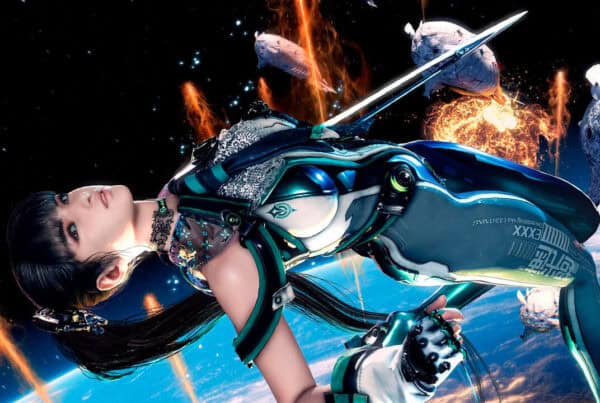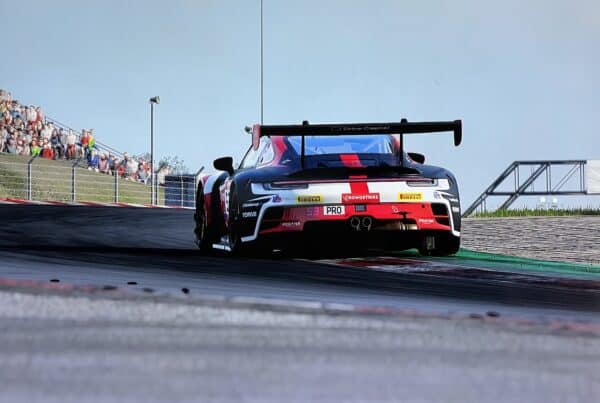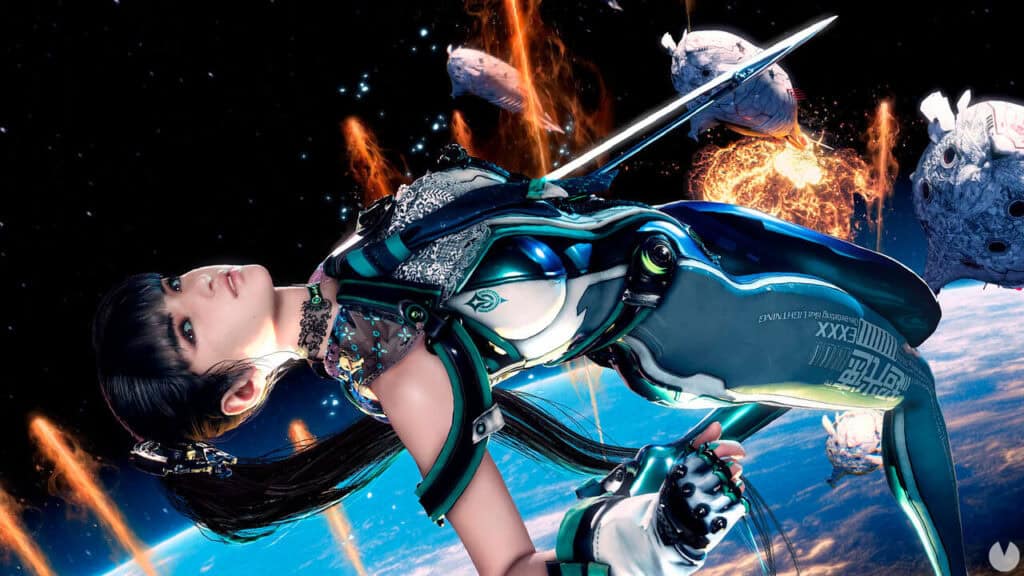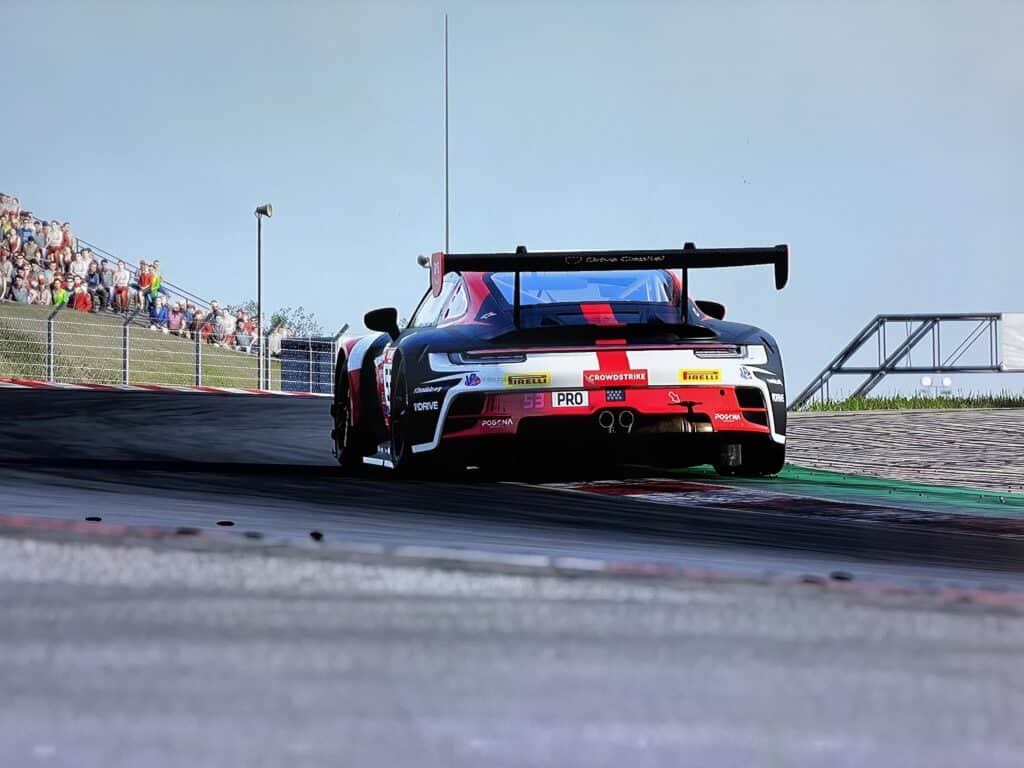Radiation, trigger-happy opportunists and lots of mutants; the iconic and great FPS survival-horror is now available to those who didn’t get a chance to play it on PC – S.T.A.L.K.E.R is back.
Taking step by tentative step down into the gloom, light starting to become more and more limited… you’re fine – you tell yourself – you’ve got your rifle, you brought plenty of ammo.
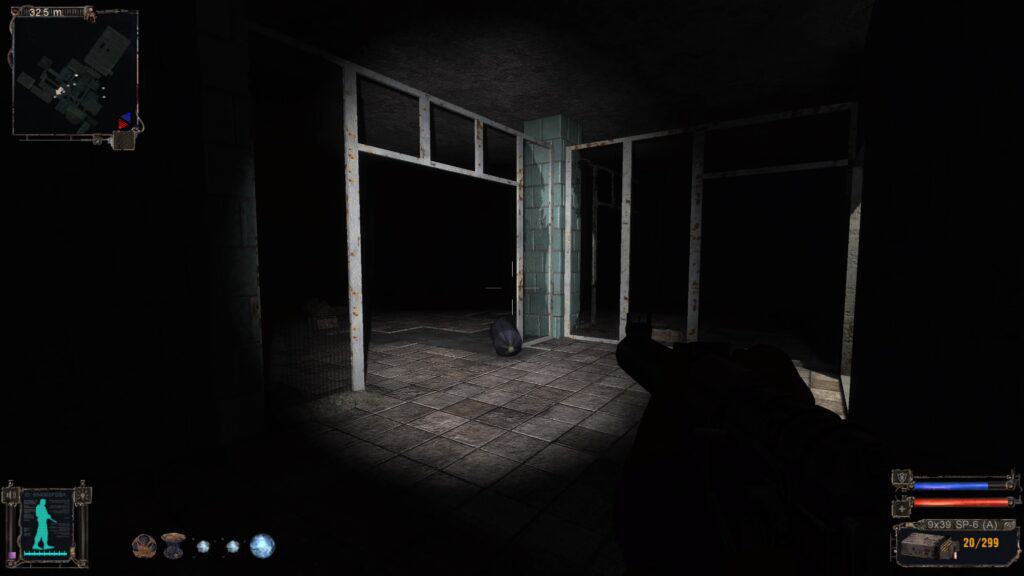
Stalker: Shadow of Chornobyl – The pitch black can hide plenty of threats.
You’re straining your ear trying to listen out for anything beyond the myriad of sounds already bombarding your strained nerves; there’s a beacon light that’s squeaking as it spins on rusted bearings. Aged and rusted metal groans and echoes through the dark.
A large wooden crate lifts into the air, floats for a moment and is then hurled towards you. You adjust your position, back up down a corridor to try and funnel whatever it is towards you, except as you back up towards a metal door it almost explodes off its hinges with a banging ram from the other side.
From behind you, a howl pierces through the laboratory; from the darkness a human comes crawling out… except its not a human, it’s on all fours like an animal. It has a gas mask covering its upper face, its bloody mouth is exposed, as is the spinal cord down out of its back – and then it leaps at you from half a corridor away.
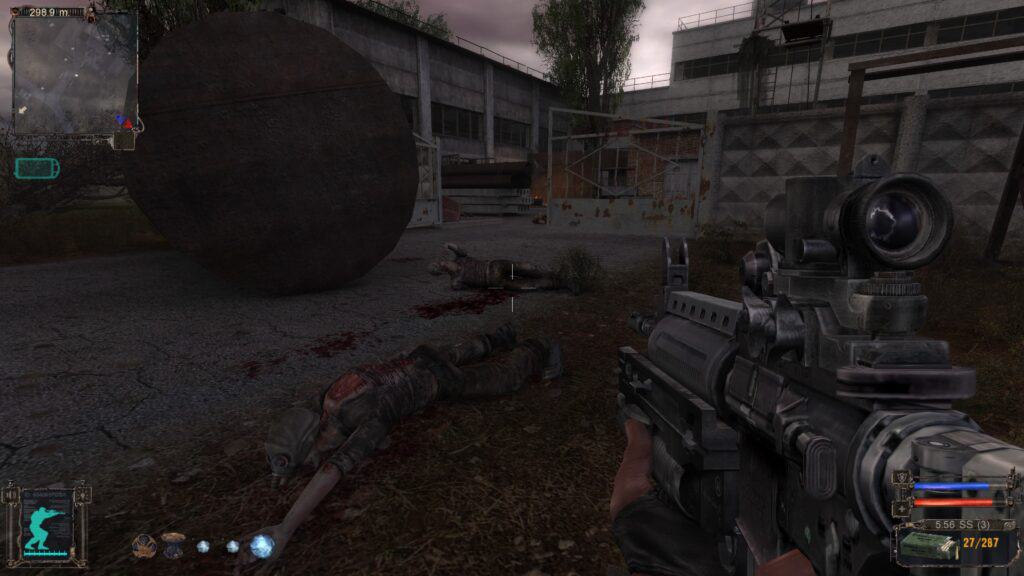
The snork is a horrifying mutation of former soldiers.
This was my experience back in 2007 when S.T.A.L.K.E.R Shadow of Chernobyl came out. I was absolutely enamoured and that has never, ever ceased to be the case. Doesn’t matter which of the three games, doesn’t matter if its playthrough one or playthrough thirty; this franchise is incredible, and I fall head over heels for it every single time I boot it back up.
So, it is important to disclose in advance, yes I’ve played these games. A lot. S.T.A.L.K.E.R 2 is my most anticipated game of the year and now this trilogy comes out on a console port to bring new players on board before it lands. I own all three on PC, bought them again on PSN when I saw they’d been released and played through the three of them.
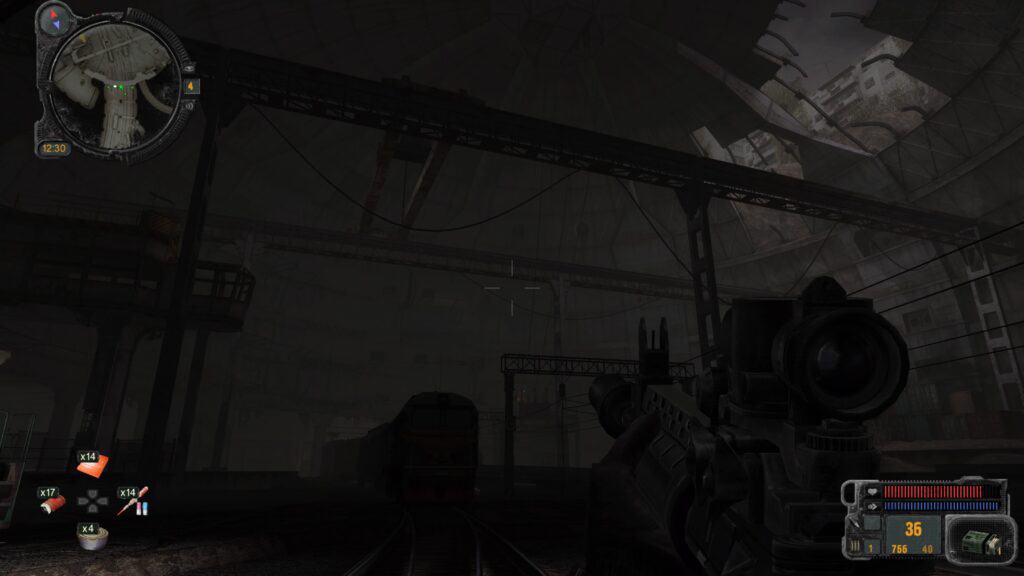
Whilst some underground places are small laboratories, other are cavernous.
So yes, I have an unashamed, unabashed adoration for these games – I wear my heart on my sleeve about them. They do have their problems, they do have their flaws, they do have their bugs and they are showing their age; yet absolutely none of this concerns me in the least. Why?
Because these games – more than almost any other franchise except maybe Metro; coincidentally made by some of people who’d left GSC (S.T.A.L.K.E.R’s dev team) to join 4A (Metro’s dev team) – ooze atmosphere from every, single moment.
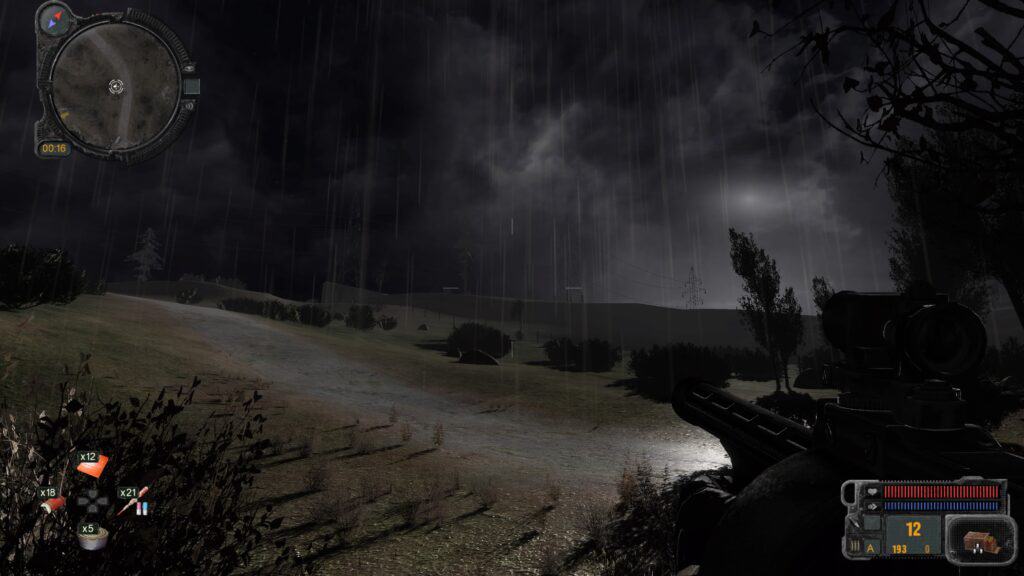
There are many times I stop to drink these games’ atmosphere in.
Doesn’t matter if I’m stood on an old water tower looming over a mutant-filled village as a thunderstorm passes over in the dark; a maze-like swamp filled with mutants and bandits; or skirmishing with fanatics amidst Pripyat’s apartment buildings or within the sarcophagus of the Chernobyl NPP itself.
Wherever you are in these games, they drown you in atmosphere and immersion. Even the moments of relative peace and quiet, in the hubs where NPCs gather, you breath a sigh of relief as you got your loot back to be sold. Or when you stumble upon some Stalkers sitting around a firepit in a dilapidated bus-shelter, one strumming notes on a guitar as the others talk and laugh, rain pattering in the background and the howls and gunshots in the distance.
I am in awe of it all every time I play these games.
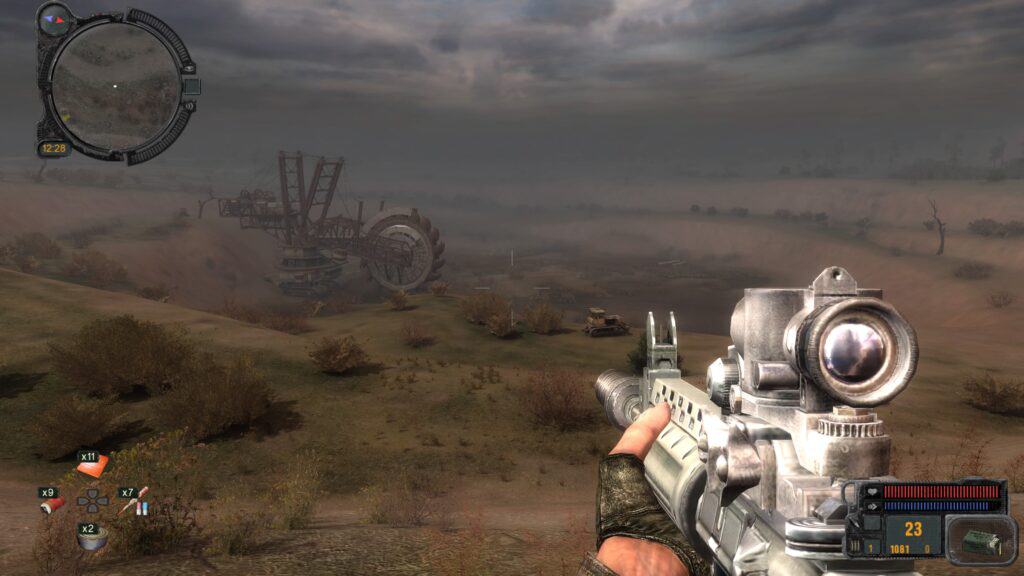
The game world is a delight to explore.
They all happen in “same place” (as in the Zone around the Chernobyl plant) but at different times. Shadow of Chernobyl was the first game released and is the “middle” in the timeline. Clear Sky is a prequel and Call of Pripyat is a sequel.
You play as different characters in each game, all with their own motivations for being there and how they got there. They also have different attitudes to the various factions, but you can weave your influence with them throughout each game individually and decide who you’ll support and who you’ll undermine, if anyone.
The factions are unique and have their own motivations and ideals that often clash heavily with one another. The two most prominent, Duty and Freedom, strongly believe in destroying the Zone or exploiting it for all its scientific and financial benefits respectively.
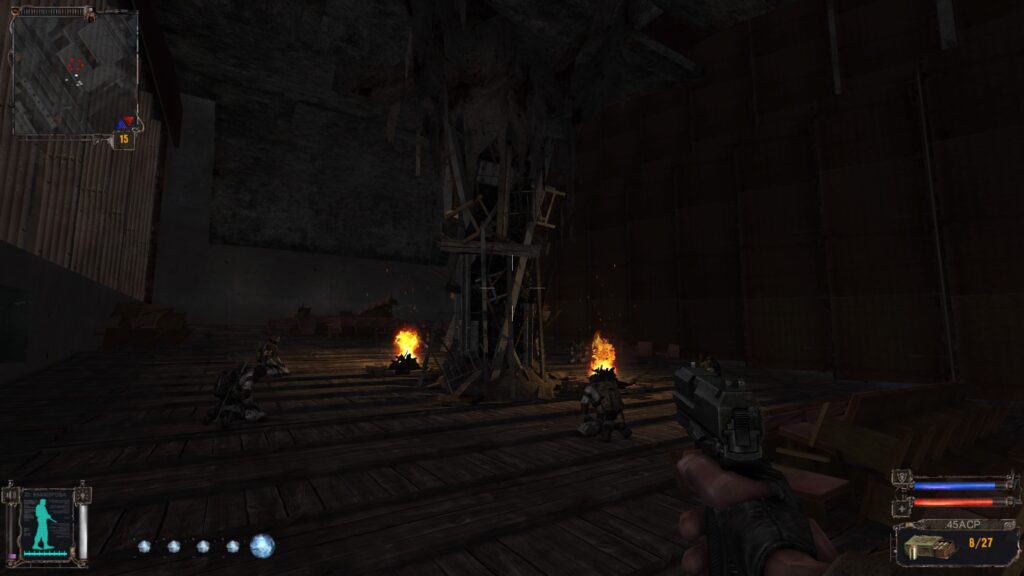
Monolith are one of the trilogy’s factions. Ultra-fanatical defenders of the Zone’s centre.
Other factions, depending on the game, have different attitudes to you. For example, in Shadow of Chernobyl, Bandits are hostiles to you but in Clear Sky and Call of Pripyat, they start off neutral so you can gauge if the life of crime and murder-for-profit better suits your ideals.
Minor factions like the military, mercenaries, scientists and loners all have their own methods and ideals and you’ll interact with them all.
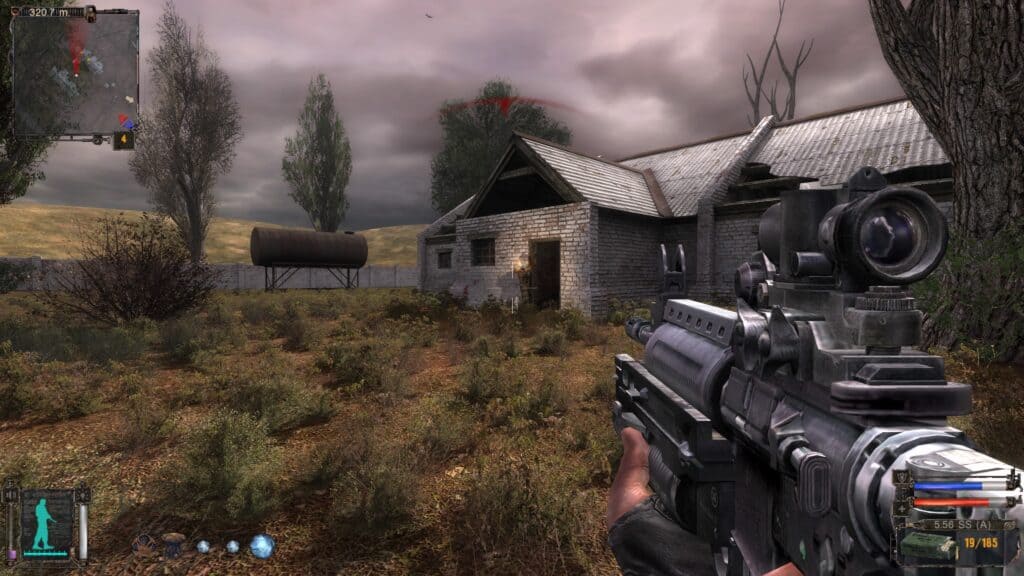
A firefight with some loners after a disagreement about a particular gauss rifle.
Note that in Clear Sky there is a drastic difference with how you interact with factions and their role in the Zone; you’ll see what I mean if you play it. It isn’t a wholly good system, but at least it’s a different system that did have some fun elements to it.
Then there’s the threats that can’t be reasoned with, one of the three primary dangers in the Zone. Mutants.
These are wonderful in their design, unique and threatening and often horrifying in the confined, abandoned places you tend to find them.
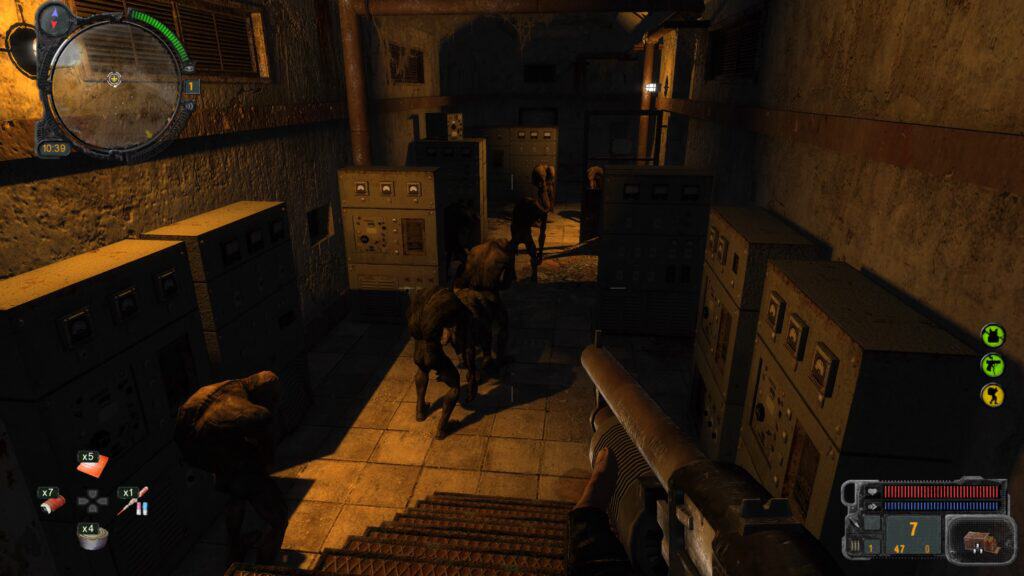
An underground area full of sleeping bloodsuckers.
Ranging from mutated rats, domesticated dogs and pigs up to the monstrous and grotesque in pseudogiants, poltergeists and chimeras – and many in between. The animalistic ones, like the dogs, pigs, boars and chimeras tend to follow a similar pattern. Encircle, bite, claw and run off to do it all again.
The likes of poltergeists pick up objects and hurl them at you, whereas psychic ones like controllers attack your mind and burers use gravity to yank weapons out of your hand and pummel you.
And believe me, hearing a poltergeist, bloodsucker or snork howl or roar is enough to send a chill up your spine every time.
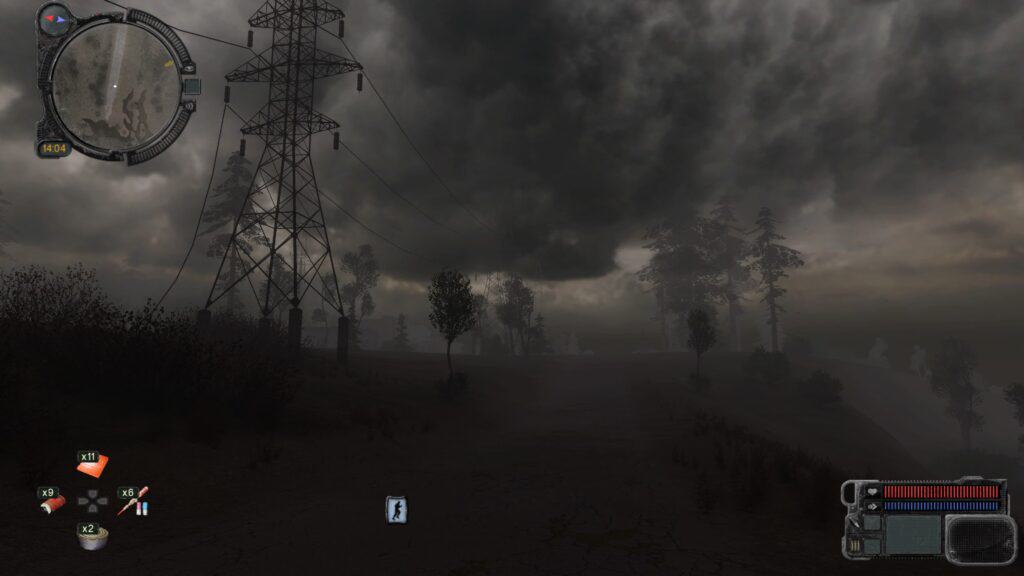
The weather effects help enhance the atmosphere and look great for their age.
Finally, the third danger besides other people and mutants is anomalies.
These are broad in their spectrum, too but all can be avoided by simply not being where they are. Some, however, are harder to see than others. You get an infinite supply of metal bolts that you can use to chuck around to your heart’s content, they make a bright flash if they hit an anomaly and trigger some of them off.
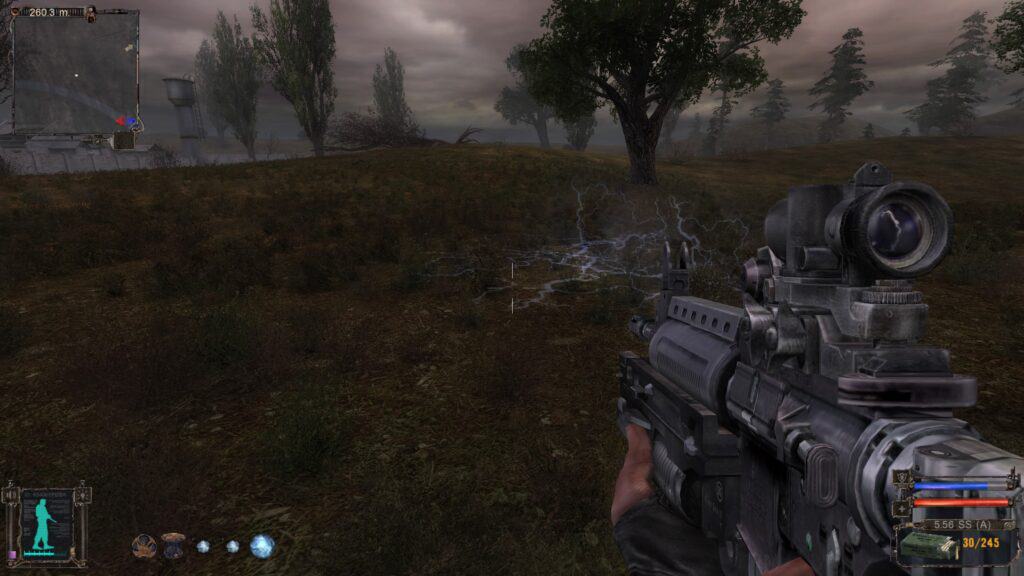
Some anomolies are easy to spot, like these patches of arcing electricity.
Some of the anomolies set you on fire if you go near them, others electrocute you, some hit you with acid. The more “out there” can pull you in like a whirlpool before compressing you and, yet weirder still, spin you up into the air and centrifugal force will rip you apart limb from limb.
In Shadow of Chernobyl, you’re reliant on a loud “beeping” that picks up in pace as you get closer; in Clear Sky and Call of Pripyat, you get various “levels” of detectors that can help you locate the dangers and – more importantly – the resulting artifacts. The primary reason why most came to the Zone in the first place.
These depend on the anomaly but have a range of benefits and you attach them to your belt to get those boosts. Some help with endurance, some with weight limit, others stop bleeding, help with healing, protect from various kinds of damage, etc. They do, however, have negatives. Some increase your radiation, some make you bleed more or have reductions to resistances. They fetch a good price, though, and can be a great money-making scheme in the games.
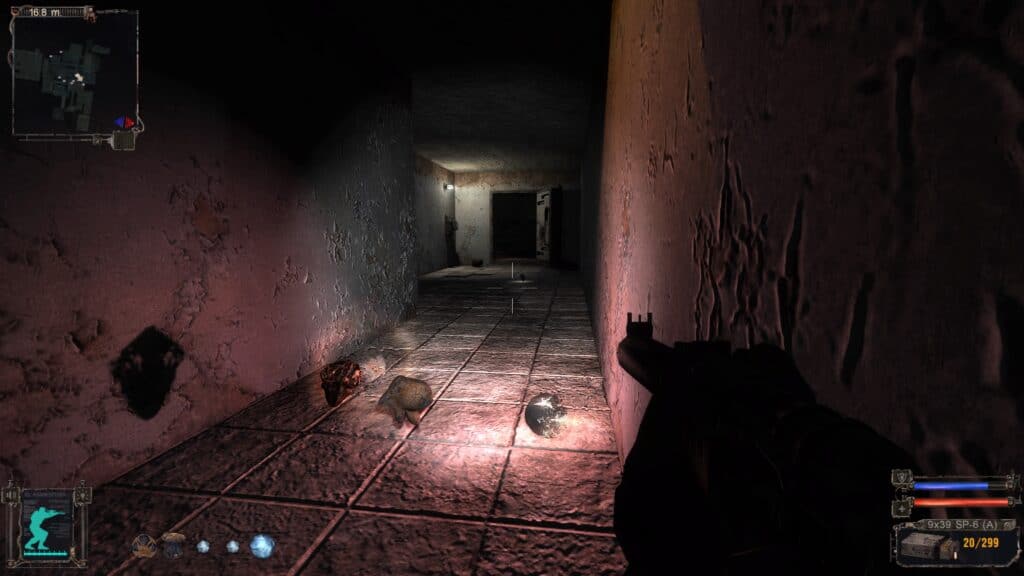
After some time, in particular circumstances, anomolies turn into artefacts like these.
Okay, okay, I’ll get to the bad. Because there is some.
There are still some bugs present. Sometimes guns dropped from enemies drop through the ground, doors don’t open, people walk into walls etc. They can be a problem but stay on top of the saving and it’ll spare you much of the drama.
Similarly, there are some crashes – in the 30 or so hours I’ve put into the console port, I had about five. I have lost some progress to this; it’s less disastrous for someone who’s played hundreds of hours because they stay on top of saves and can quickly get back, but if you’re new and forget and lose an hour or more of progress, it can sting.
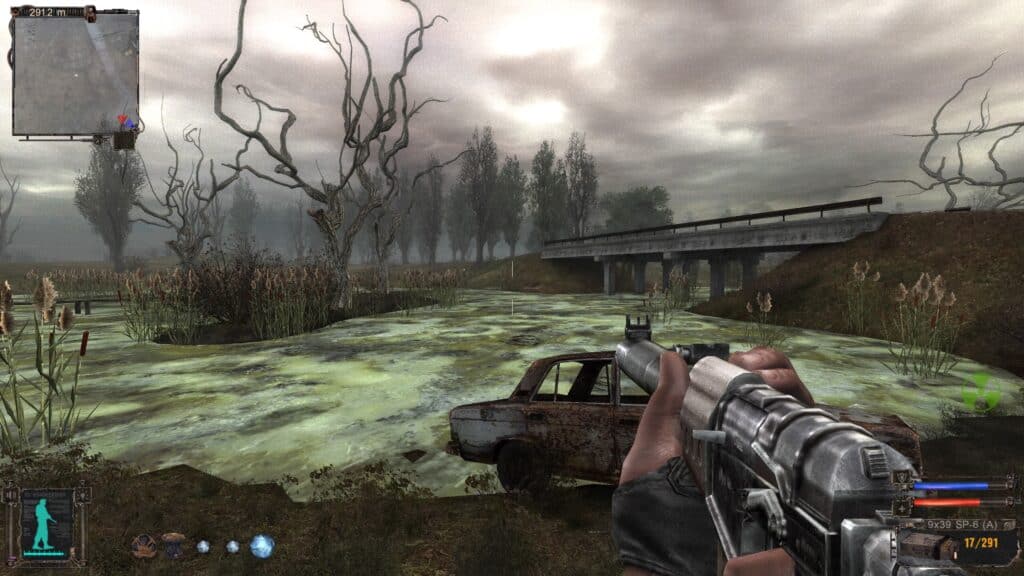
An irradiated swamp in Dark Valley.
That’s about it. How much those effect you is up to the player but know going in that these issues are there.
The port itself is pretty competent. The UI is neat and tidy, the weapon wheel and quick action buttons work, it feels smooth on a controller.
Also, know that these games are over a decade and a half old, now. Shadow of Chernobyl came out in 2007. They aren’t graphically enhanced, they still have some blocky textures and weird animations, but they’re absolutely serviceable and I don’t even notice whilst I’m playing it.
I’ll reiterate my earlier comment, whilst we’re here. These problems have never bothered me, even when there’s been a big loss of progress. They never have, they still don’t. I honestly feel the positives of this game absolutely overwhelm any potential drawbacks.
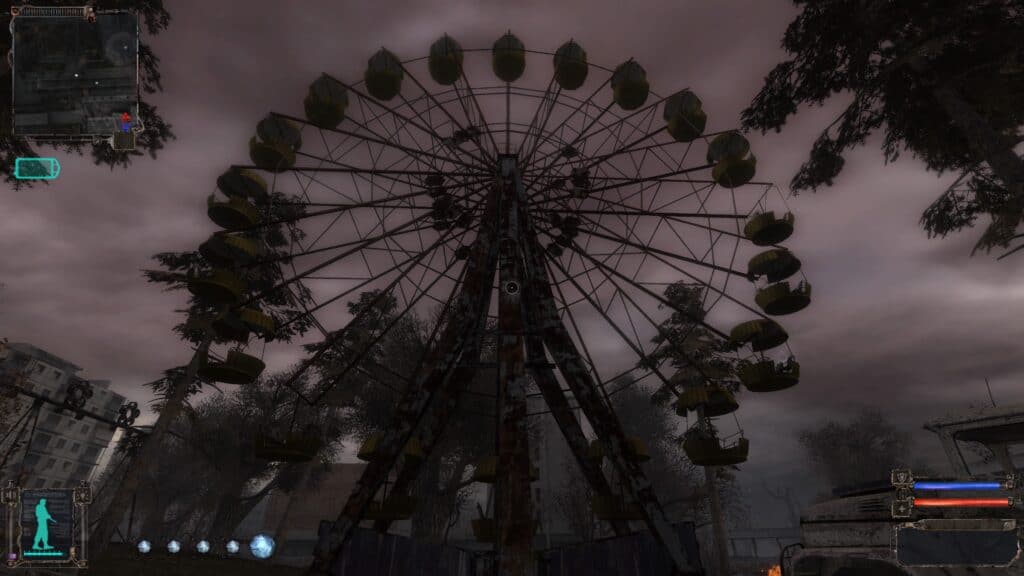
The famous landmark in Pripyat, the amusment park’s ferris wheel.
I think this trilogy is absolutely brilliant. I enjoy playing it and I have done a considerable amount of that. This port was another way to do so and see what they’d done to make it more suitable for consoles; it seems to have done that well.
There’s a reason these games have such a strong cult following; give them a shot, dive deep into the game, let the atmosphere roll over you and I have no doubt you’ll see why it has its reputation.
Have a read of our other reviews here.

